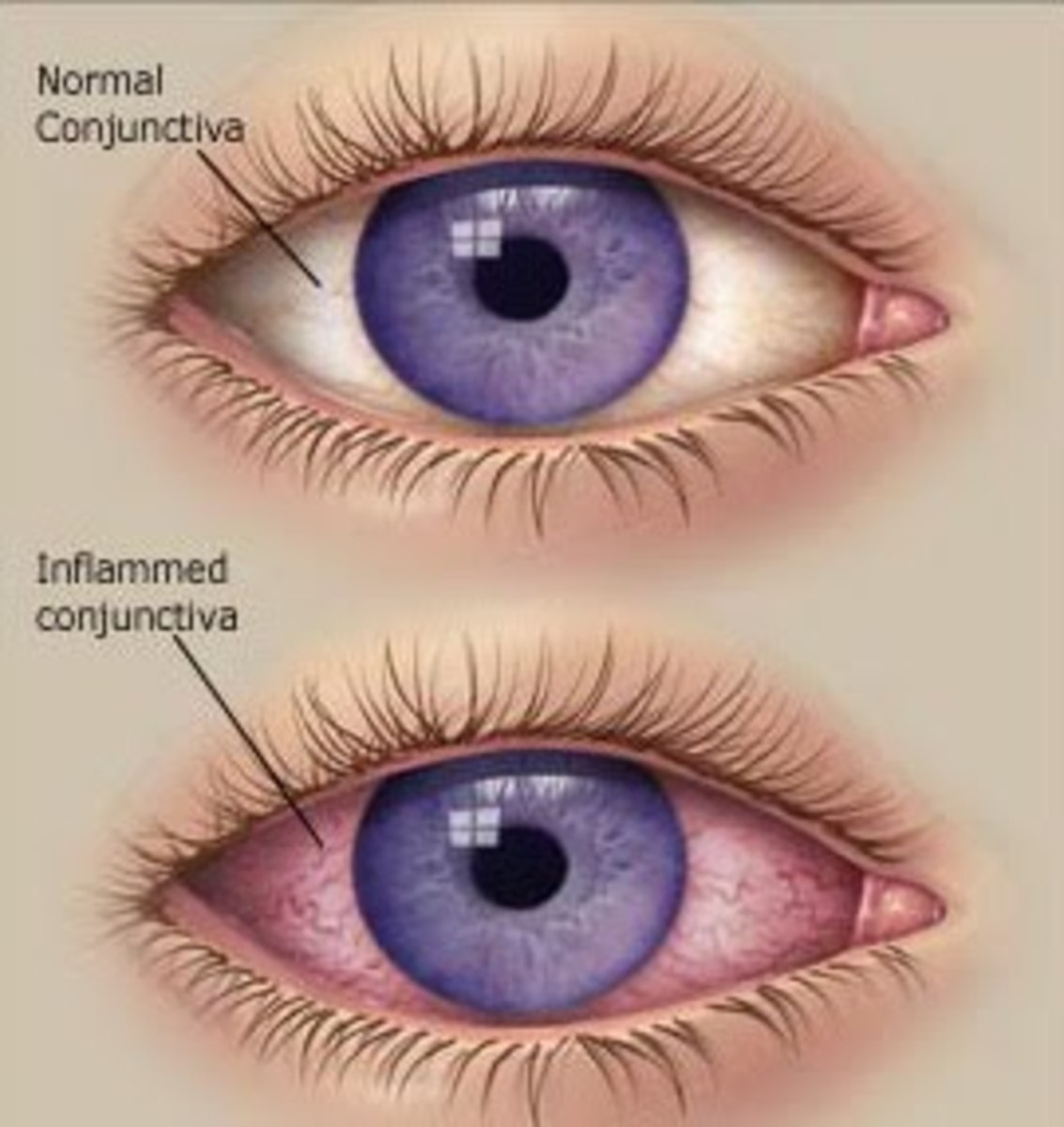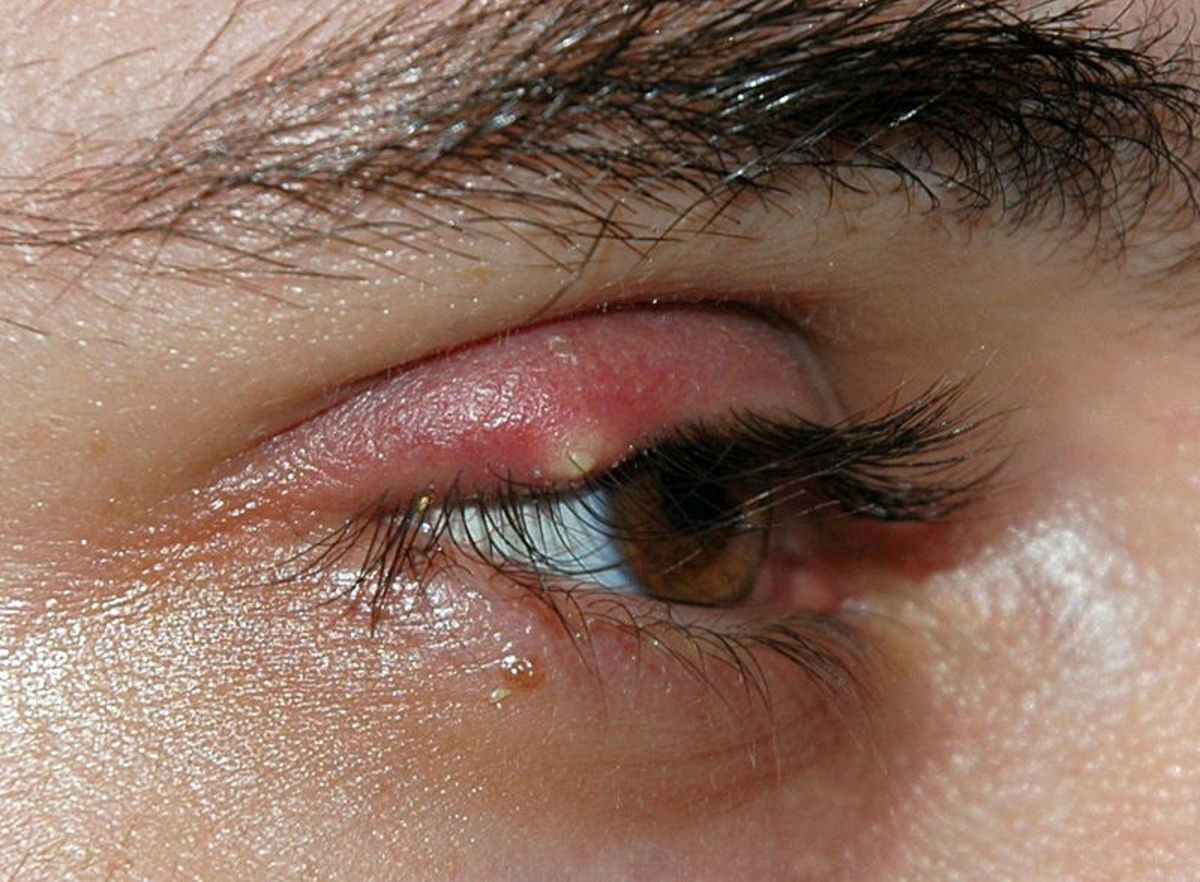You Have Cataracts? Don't Worry, Here's Everything You Need to Know about Cataract Surgery
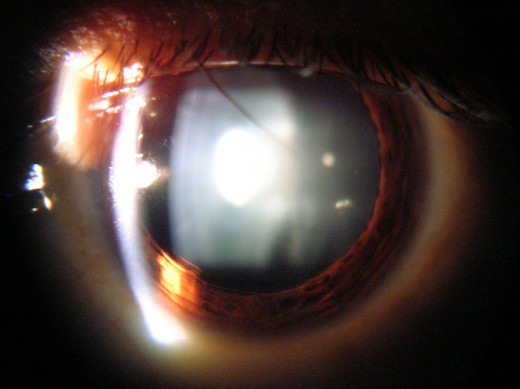
Introduction
Eye cataracts are very common type of eye disorder. There is nothing to worry about it as with today medical technology, your eyesight can be cured within days.
Cataract normally develops in the adult’s eye, particular for those who have reached their fifties. A cataract is a thin layer clouding that develops in the crystalline lens; the outer membrane of the eye. Cataract is somehow a severe disease because it might lead to blindness if no medical attention is given. With the present technology and treatment, this eye disorder can be easily corrected and the normal procedure is to undergo an eye cataract surgery.
Your optometrists will normally refer you to an eye surgeon in case if he suspected that you are developing one. Further assessment and testing will be carried out by the surgeon in order to find out the latest condition so that the appropriate action could be taken. Normal procedures include a full thorough vision assessment, pressure measurement that exists in your eye (IOP), assessment of your retina and measurement of your eye length to help determine the correct replacement lens for you. A lens replacement is only needed in severe case.
After all the necessary test and assessments are conducted, your surgeon will then sit down with you to brief and discuss the proposed surgery. He will answer all of your queries regarding the benefits and the risks involved should a surgery is performed. With all this, you can then make an informed decision.
Compared to decades ago, an eye surgery was considered to be a very risky procedure. However, with new and continually improving of medical technology and more advanced surgical techniques, as well as better anesthesia options, such operation is remarkably safe now. While nobody can guarantee a total risk free surgery but with effective surgical technique, all can be said is the success rate is quite high. By the way, it all can now be done as a day-surgery without needing you to stay overnight at the hospital. And you can resume your normal activities like driving, reading and sports just within a few days after the procedure.
An eye cataract surgery involves a procedure that removes the cloudy lens of the eye and replace it with an artificial clear lens that known as intraocular lens or IOL. With the latest development, the procedure is performed through microsurgery where the cataract surgery is performed through a tiny incision in the eye with no more than 3mm long. This is quite remarkably successful and the recovery time has been significantly shortened to just a couple of days.
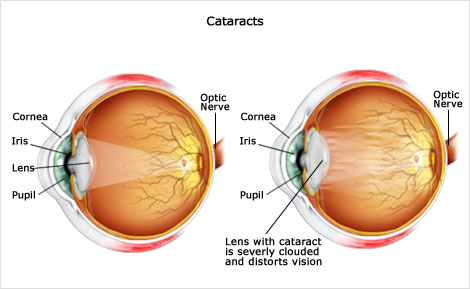

Eye Cataract Surgery Video Presentation
In order to understand more about eye cataract surgery, you can watch the video animation below. It is a creative work and you can learn it through both visual and audio. This video presentation depicts the procedures of phacoemulsification and extracapsular removal of a cataract and the replacement of an artificial lens which is also known as intraocular.
Notes on the video:
The large majority of cataract surgeries are performed using the phacoemulsification technique. During the phacoemulsification technique an ultrasound probe breaks the cloudy lens into tiny fragments. The fragments are then vacuumed out through a tiny incision. After that, an intraocular lens implant is then inserted to replace the natural lens that has been removed. Because the incision is tiny, stitches are often not necessary and visual improvement is usually noted relatively soon after the surgery.
In the case of extracapsular technique the cataract is removed as one entire piece. Thus, this procedure requires a larger incision and stitches. As usual, once the natural lens has been removed, an intraocular lens implant (artificial lens) will be inserted as a replacement. Recovery is usually slower and this is due to none other than the larger incision. The stitches sometimes need to be removed too, and that is usually done in the office. After both procedures, the surgeon will place a patch over the eye.
You can read more about surgical methods below.

Common Methods Used in Eye Cataract Surgery
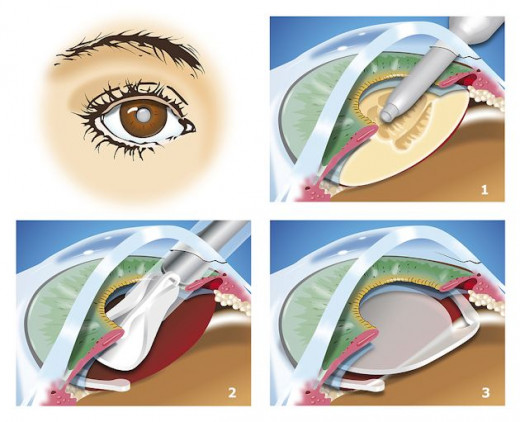
There are three common procedures practiced in cataract surgery: phacoemulsification, extracapsular and intracapsular. Each of these procedures is chosen based on the patient’s individual case. Below are brief introductions of each methods:
- Phacoemulsification is the most frequent and contemporary procedure used in cataract surgery (for not severe cases). With this method, your surgeon doctor will make a very small cut on the surface of the eye in the close proximity to the cornea. The doctor will then use a threadlike ultrasound probe device to generate ultrasonic pulsations that dissipates (phacoemulsifies) the clouded lens. Once it is done, the same device is used to siphon out the small patchy pieces. When the whole process is finished, a synthetic lens will be placed onto the cornea. The purpose of this lens is to help your eye to focus after the surgery. This type of surgery takes very little time and it won’t take more than half an hour to finish.
- Extracapsular cataract surgery is the second most common method practiced. This cataract surgery procedure is used for patient with more severe case where the cataracts are too complex to handle with phacoemusifiacation. Unlike the first method where only a slight cut is introduced, this one demands a lengthier slit so that the cataract can be taken out as a whole without being fragmented into the eye. An intraocular lens is then positioned in the same place as with the phacoemulsification method. Since this method involved a bigger wound, some stitches are needed to close it, and thus, making the surgery wound longer time to heal.
- The final procedure that would be discussed here is known as the intracapsular cataract surgery. Intracapsular procedure involved an even lengthier incision than extracapsular method and this is definitely calls for serious cases. The surgeon will take away the whole lens with the adjacent capsule altogether. Since the capsule is to be taken away, the intraocular lens will have to be positioned in a slightly different location, typically in front of the iris. This approach is very seldom used except in some serious cases which both the previous procedures cannot handle. If the patient has dealt with his or her cataract problem much earlier, the situation won’t get into serious level. Besides being more costly, this even takes longer time for recovery.
Please take note that this is just some brief introductions for some of the common procedures involved in eye cataract surgery. Should you need further assistance and/or explanation on cataract surgery, the best person to go is none other than your doctor.
Phacoemulsification Cataract Surgery

Refractive Cataract Surgery
Refractive cataract surgery can be considered a new term in the glossary of vision reconstruction technology. It is a combination of the traditional cataract surgery method and the modern refractive surgery technique.
The purpose of a normal eye cataract surgery is to remove the cloudy lens and replace it with an intraocular lens that would restore the patient’s ability to see. In order words, it is a purely medical approach that restores the patient’s vision back as it was prior to that cataract development. For that, even after the patient has recovered from the surgery, he still need the aid of eyeglasses if his condition prior then required it.
This is, however, different with refractive cataract surgery. It has a goal that is much more aggressive compares to a traditional cataract surgery. This procedure will not only help the patient to regain his vision but also greatly reduce the need for corrective eye wear. This surgery is basically more of corrective in nature and it is able to correct nearsightedness, farsightedness and astigmatism. Refractive cataract surgery is a new breakthrough in the vision correction field and it is definitely a good news for any cataract patient.
Nowadays, refractive cataract surgery is quite popular in the States because of its effectiveness and efficiency that guarantees a success rate of up to 90% during the surgery. Besides, the surgery can be performed either to change the outer surface of the eye or the internal optic of the eye. This is done by choosing the right intraocular lens to replace the lens of the patient’s eyes. Basically, this depends on the condition of the patient’s eyes and the type of lens that he wants.
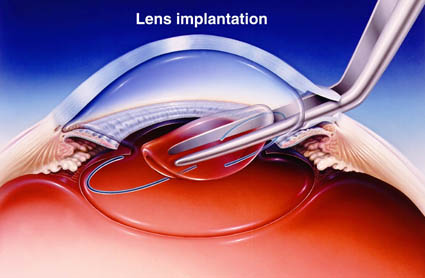
The use of premium intraocular lenses (IOLs) is the key development of refractive technique. These premium IOLs are specially designed in such a way that they have the capability to provide good uncorrected visual acuity at almost all distances after the surgery.
In some cases and as a preventive measure, the patient who develops a cataract in one eye may choose to have a premium IOL implanted on both eyes (even on the unaffected eye). This procedure of replacing a natural lens that has yet to have a cataract with a refractive intraocular lens is known as refractive lens exchange or in short form, RLE.
There are several benefits of combining an eye cataract surgery in one eye and a RLE procedure in the other. These include:
- Enhance the overall refractive result for better and more comfortable binocular vision. It balances both the vision capability and which makes seeing the world through your eyes a better experience.
- Eliminating the need of corrective eyewear for both eyes after the surgery.
- A preventive measure so that cataract won’t be developing in the eye with the clear natural lens in the future.
There are two types of premium intraocular lenses that are currently used for refractive cataract surgery at the moment:
- Toric IOL – Toric lens corrects astigmatism or farsightedness. This is the most common eye problem that people face and residual astigmatism is the main reason why people who have undergone a conventional eye cataract surgery still need to depend on eyeglasses
- Presbyopia-Correcting IOL – Presbyopia is an eye problem where people are having the problem of focusing on close up thing or nearsightedness. This problem normally arises for people who have passed the 40 years mark. However, this also seem to be the problem that faced by younger people who sustain a cataract before becoming presbyopic. Conventional cataract surgery uses conventional lenses that do not have the ability to change shape to focus light for near vision and this is what make them lose their near focusing ability.
Although a refractive cataract surgery might seem to be a good option, you will still need to consult with your doctor first. See what he has to say about it and if it is right for you. Your doctor will run a set of tests to accurately determine the problem with your eyes and the degree of the refractive errors of them. Besides, a refractive surgery is quite expensive compares to the conventional one. If money is your concern, go check it up with your insurance company and ask about the level of coverage that your insurance plan provides.

What is Intraocular Lens (IOL)
An intraocular lens is an artificial lens that either made of plastic, silicone or acrylic that performs that same function as of the eye’s natural lens. In other words, it replaces the natural lens entirely when it ceases to function. Normally, a person that needs to undergo an eye cataract surgery would have to have his natural lens removed and replaced with an intraocular lens. Most of the IOLs that used in the surgery today are around a quarter of an inch in diameter and soft enough to be folded without causing any damages. The softness is very important so that the lens could be placed into the eye through a very small incision.
An intraocular lens works exactly the same way as how the eye’s crystalline lens does it jobs. It focuses the light that falls into the eye onto the retina which then converts the light rays into electrical impulses. These signals are used by the brain to process and eventually convert them into images as what we see the world through the eyes. The whole process happens very fast so that we don’t experience the lapse.
Failing to focus the light correctly onto the retina will cause the brain fail to see the images correctly. That’s why people who have eye cataracts see blurry.
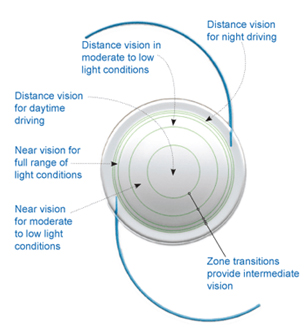
Posterior chamber lens is the most common type of intraocular lens used today. This lens is placed behind the iris within the lens capsule where the natural lens used to occupy. So basically it just replaces the natural lens functions and place. On the other hand, if the lens capsule is damaged, an anterior chamber lens will be used instead. As opposed to previous case, this lens is placed in front of the iris instead of behind it. In both cases, the lens will have small arms known as ‘haptics’ and it purpose is to hold the lens in place.
Different Types of Lens:
- Standard IOL – a monofocal lense that provides a set of distance focal point for the patient so that the eye cataract surgery patients are able to see clearly within a range. Statistics shows that around 95 percent of patient who have undergone a cataract surgery and with replacement of standard IOL have their vision completely restored to its pre-cataract state.
- Accommodative IOL – is also a monofocal lens but instead of just providing a set of focal point for the bearer, it is designed in such a way that it can move in response to the patient’s eye muscles. When the patient looks at something which is far away, the muscles in the eye will relax and causes the lens to move slightly backward and assume a flat position. On the other hand, when looking at a closer distance, the muscles will react or contract and which causing the lens to move slightly forward. This will make the lens to become more curved so that the focal point will fall within a shorter range.
- Multifocal IOL – this is a more sophisticated lens where it also includes the corrections for near, intermediate and distance vision in a single lens. This is made possible through highly specialized optics technology that divides the light and focuses it on more than one focal point at the same time. This will provide a wider range of view from near to distant. Since the multifocal lens is capable to focus light on more than one spot or point, the patients can now depend lesser on their glasses. Some even do not need to wear the glasses when seeing thing in distance.
- Toric IOL – this lens is specifically designed to neutralize astigmatism or farsighted. It reduces or completely eliminates the need for a distance glasses when seeing at a distant. In most cases, this type of lens may also eliminate the need for limbal relaxing incisions, a method of surgery where incisions are made at the edge of the cornea. The purpose of such technique is used is to enable it heal in a more spherical shape. Toric iol is a premium lense and you would have to pay more for one.
(Note: The corneal limbus is the border of the cornea and the sclera or the white of the eye)

How Much Does a Cataract Surgery Cost
Eye cataract surgery could be a very costly procedure and for people who face money problem, they could seek for financial aids that specially deal with they type of surgery.
The cost of the surgery depends on the type of the cataract procedure used and also the intraocular lens that is to be implanted. It can also vary from one location to another; some places offer cheaper prices while some other offer premium prices. It also depends on the living standard of the places, for that different town or city will have different pricing.
Cataract surgery is often covered partially (sometimes full) by the health insurance company such as Medicare. This is a good news for people who might need this financial aid but the insurance company only takes in this coverage prior to the development of eye cataract. So it makes no sense if the patient try to get this protection after diagnosed with cataract because the insurance company won’t accept it.
From the recent research conducted, the cost of a cataract surgery procedure is around USD$3,500 for each eye if you are paying cash. Please note that this is for the normal case where the surgery could be done in less than half an hour. For severe and more complex case, the price could go up as high as USD$5,000 for each eye.
Eye cataract might not be so serious (unless it has developed into much severe stage) but that doesn’t mean you can procrastinate the procedure. Fix it while it’s still in the early stage so that you can have your perfect vision back in time. For patient who has lack of money and does not possess an insurance coverage, he or she can try to get a loan from the bank or even apply for financial aid for cataract surgery.
The application for the financial aids could be done by filling up the form and it is important for the patients to present the certificate or medical report from their personal eye doctor to proof that they are indeed need the medical attention. Grant will be approved after a detailed analysis of the given report by a panel of doctors. For serious and immediate case, the patient could apply for the aids after the surgery where assessment would be done as soon as possible so the the patient won’t face any problem.
This funding option is also very helpful for people who come from the low income range as this aid might cover half of the cost involved. This means the patient only need to pay back only half of the total medical cost (which include medication, glasses and follow-up medical services).
For more information on such financial aids, please contact your eye doctors since they are the ones that can provide you with further advices and guides.

Risks and Complications of a Cataract Surgery
Although cataract surgery is the safest procedure in the world, you should be aware that there is always some risk involved.
At a success rate of 97 percent, eye cataract surgery can be said as a very safe procedure. There is rarely any other surgery procedure that can ever achieve that. However, that doesn’t mean that there are no risks and complications at all. There is always be risks involved but the chances that they happen are extremely low and it may only happen if there is infection or bleeding in the eye.
Your surgeon doctor will talk about this issue prior to the cataract surgery and he will brief you and your family about what to do should this happens. This Q&A session is very important for you and your family to learn exactly what is cataract surgery and the potential risk that might get involved. This might also help should anything happens during and after the cataract procedure has been done.
Some of the common risks and complications that occur after the cataract surgery include:
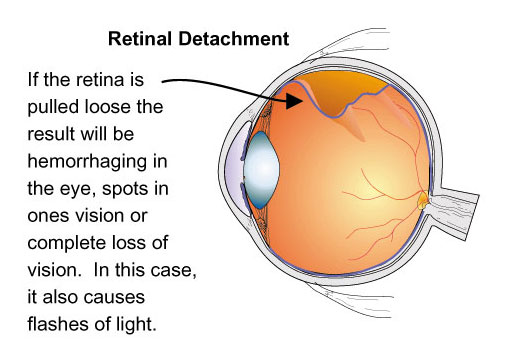
- Retinal detachment – This is a condition that happens when fluid leak through a tear in the retina and which causes the retina to detach from the back of the eye. When this occurs, the patient will see flashes of light and dark spots. Immediate medical attention is necessary and you should contact your doctor as soon as it happens because this may lead to blindness.
- Mal-positioned – This condition which is also known as dislocated intraocular lenses will cause you to have double vision. You see things in the double as you are having a delusion. If the intraocular lens becomes even more badly dislocated, your vision sharpness will decrease substantially. If this happens consult your doctor immediately and he or she will arrange a second procedure.
- Posterior Capsule Opacity (PCO) – This is a condition where your vision becomes cloudy or blurry after the eye surgery. A PCO is not very risky as compares to retinal detachment as it is just a hazy membrane that forms behind the artificial intraocular lens (IOL) that was used to replace your natural lens. To treat this, the doctor will generally use a method known as YAG laser treatment. This is a very simple procedure and the steps involved are: dilating eye drops, hazy posterior capsule removal and anti-inflammatory eye drops. The entire process only takes a couple of minutes and without causing any pain and discomfort.
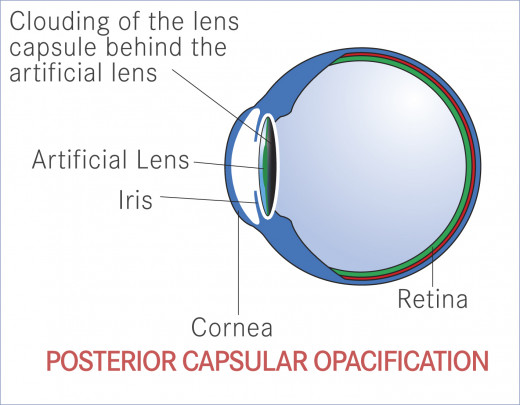
- Cystoid Macula Edema – Or also known as decreased vision is a condition that cause the swelling in the layer of nerve cells that covers the retina. Macula is the part of the retina that responding to light in the central part of your visual field and when blood vessels in the retina swell, decreased vision will happens. Consult your doctor immediately if this happens. Your doctor might give you an anti-inflammatory eye drops or injections of steroids to the back of the eye to cure it.
- Choroidal Hemorrhage – This is a condition where the web of fine blood vessels (or choroids) bleeds during the surgery. This normally happens if the patient has high blood pressure or glaucoma. When the hemorrhage is confined to a very small area, the patient may have a small risk of visual loss but if the condition is severe, significant visual loss may occur. That’s why it is very important for your surgeon doctor to know your medical background before performing this operation. He or she will conduct a research on this before putting you in the surgery room.
- Endophthalmitus – This is a condition that causes pain, swelling, redness and sensitivity to light. This happens if there is an infection inside the eye after the surgery. Endophthalmitus is not a severe case and usually antibiotic eye drops are enough to treat it. Normally the doctor will give you a bottle of antibiotic eye drop as part of the prescription.
Those are the common complications that might happen after you have undergone an eye cataract surgery. If any of the above (severe complication) happens, do not get panicked and consult your doctor immediately. Nothing serious will happen if swift action is undertaken. By the way, your doctor will brief you on the eye care instructions after the surgery.

What Is Secondary Cataract?
Secondary cataract is the condition where the patient re-experiences the same kind of eye clouding after the initial cataract surgery has been performed. It is very common for the same symptoms that caused by the original cataract are perceived again during this condition. About to 30 percent of patients tend to develop this condition after their first cataract surgery. The onset of a secondary cataract can occur months or years after the original surgery has been performed. If it happens in one eye, then it is more than likely it will happen in the other eye too.
Secondary cataract which also known as ‘posterior capsular opacification’ happens due to the two following events:
- After the first surgery, there might be some leftover of natural lens cells that proliferate on the back of the capsule.
- The capsule becomes cloudy gradually and interferes with clear vision as the same way of the original cataract did.
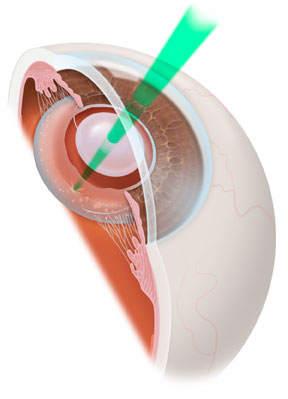
According to a research that was done in 2001, the probability for a patient to develop a secondary cataract was 6 percent at the first year, 15 percent on the second year, 23 percent on the third years and as high as 38 percent on the ninth year. The risk of developing secondary cataract is much lower with ‘phacoemulsification’ surgery method. It was also found out that secondary cataract are more likely to happen in younger patients, especially those that are suffering from diabetes or when cataract surgery is performed together with 'vitretomy' procedure (a process of clearance of debris from the fluid in the eye)
Secondary cataract is not very risky and it can be treated with a laser surgery. The doctor surgeon will use a laser to make a small hole on the cloudy capsule that is causing the problems and clear it. This is a very fast and safe procedure and it normally takes not more than a few minutes to complete. Just like the original eye cataract surgery, this procedure will also involve common eye complications such as glaucoma, retinal tears and inflammation and swelling. Patients are advised to take extreme care of their vision after the procedure completed.
Preventing Secondary Cataracts
- Studies suggest that using acrylic lenses decrease the risk of developing a posterior capsular opacification.
- Medical researchers are studying some prevention methods such as tranilast eyedrops, using new lens materials, using special capsular rings inserted during initial cataract surgery and new coatings on the implanted lens.
These are still under studies now, so it might take some time before they can be fully practiced in all eye cataract surgery procedures. With the advancement in technology and consistent research, it is believed that secondary cataract can be prevented not very far in the future.

Cataracts and Diabetic Retinopathy
Diabetic Retinopathy is a disease or which is a kind of complication that origins from diabetes. This happens when the tiny blood vessels in the retina are damaged. If they are severely damaged, blood and fluid might leak into the eye and form scar tissues which will impede the patient’s eyesight. As the disease progresses, new abnormal blood vessels will grow on the retinal and thus, affecting the vision even further.
All diabetic patients are advised to have comprehensive eye exams every year to detect if they are any changes with the structure and all parts of their eyes. This is crucial so that early precautious steps can be taken to hinder the disease to becoming even worse.
Most people would not aware of diabetic retinopathy disease because there are hardly any visible symptoms during the early stage. The symptoms will only show during the later stage, which is quite late then, since the patient will have surely experience some complications resulting from this condition. This is why a periodic eye check is highly recommended.
Some of the signs of diabetic retinopathy and its complications are as follow:
- Distorted or blurred vision and having difficulty to read
- Having floaters in the vision
- Experience pain in the eyes
- Partial or loss of sight completely or veil or a shade across the field of sight
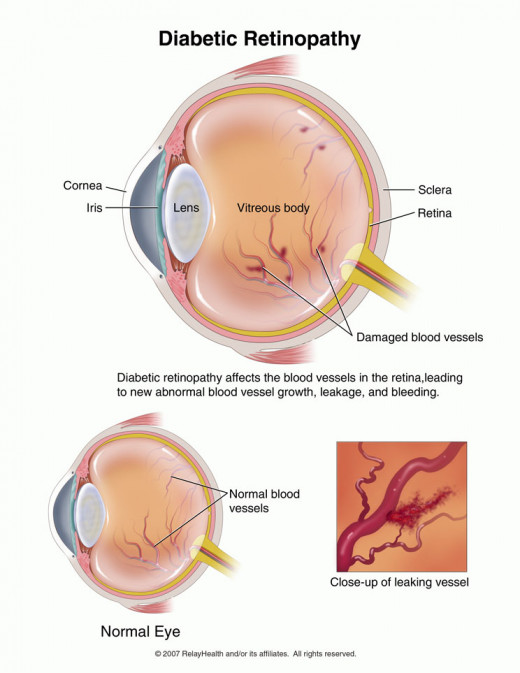
Treatment for this diabetic retinopathy is none other than undergoing a laser surgery. Apart from that, eye surgeon also recomends intraocular injections of steroid medications. The latter method has been proven effective and can be considered as an alternative method for treating diabetic retinopathy.
Now can diabetic retinopathy cause eye cataracts?
The answer is absolutely no, diabetic retinopathy does not cause cataracts. However, diabetes by itself can. With diabetes, the eye’s lens may become over-hydrated and when this happens, deposits or opacities can from at either in the front or back of the lens. This clouding is what forms or known as cataract and in some rare cases, cataract can form in just matter of days where preventive measures are too late.
Contrarily, cataracts do not cause diabetes or even diabetic retinopathy. In other words, diabetes can cause both cataract and diabetic retinopathy but not the other way round.
If a cataracts patient suffers from either diabetes or diabetic retinopathy (or even both), he or she might be at risk of ‘Cystoid Macular Edema (CME)’, which could affect the outcome of the cataract surgery performed. CME is a condition where multiple cyst-like areas of fluid in the macula that cause the retina to swell or ‘edema.’ This is very risky condition.
Even if this is the case, the doctor will still recommend the patient to undergo a cataract surgery treatment. This is necessary to avoid blindness.
* For more information regarding diabetes, you can visit, http://www.diabetes.org/

Cataract Surgery FAQ
Below is a set of frequently asked questions on cataract removal surgery. Go through this FAQs to have your most asked questions answered.
When should I undergo the cataract removal surgery?
There are many people who believe that cataracts can only be removed when it has reached a certain stage, which is usually a highly advanced stage where blindness could happen at anytime. This is actually not true. You do not have to wait until the situation has become worse in which it might pose a potential threat to your vision. A cataract removal surgery could be performed as soon as your doctor feels that your vision has started interfere with the quality of your life. You could also decide when you want it to be removed at anytime that you feel is right; most probably when you are beginning to feel uncomfortable with it.
Can cataracts be treated without a surgery?
Well, the actual answer is no. From the medical point of view, this is not possible. You could, however, try to consume foods that are rich in vitamins and nutrients that are good for eyes. See if it has any effect onto the cataracts but please only try this if the cataracts is still at the infant stage.
Can cataracts left unattended?
Unless you want to lose your vision, you have to do something with it. The clouding layer of your lens will become thicker and larger over time and thus, making your sight to become worse. This could take anywhere from a few months to many years for that to happen. Eventually, the entire lens will be covered with the clouding layer and lead to total blindness. During the intermediate time, you still could function normally, as long as it doesn’t interfere with your life and job.
Who performs the cataract removal surgery?
Only a certified ophthalmologist who has undergone special training in eye surgery can perform cataract procedures.
How do I choose the right intraocular lens implant?
You don’t have to worry about this issue as your doctor will know what works best for you. However, under certain circumstances and advices from your doctor, you can choose between the normal intraocular lens and the multifocal lenses which can offer less dependence on glasses after the surgery.
What are the recommended brand for multifocal IOL?
Your doctor surgeon will advise you on the brand that is best for you. Some of the trusted brands that are available in the market include AcrySof® ReSTOR® IQ IOL, the Tecnis® Multifocal IOL, or the accommodating Crystalens®.
What is the cost of a cataract surgery?
This varies depend on the doctor that performs the surgery and also the type of intraocular lens that you choose. However, the cost for a normal procedure cost around three thousands and five hundreds dollar for each eye if you are paying cash. If you have a medical card, you can ask if this type or surgery is covered and until what extent.
What are the common types of cataract removal surgery?
The common methods used in the surgery include Phacoemulsification, Extracapsular Cataract Surgery and Intracapsular Cataract Surgery. For normal cases, Phacoemulsification will be used and if the conditions are more severe the latter two will be considered.
Is an eye cataract surgery safe?
You could rest assured that this type of surgery is very safe. Statistics has shown that the overall success rate of cataract surgery is as high as 95 percent; indeed the highest among all types of surgeries. This gets even better with continuous innovations in medical technology.
Can cataracts come back even after the surgery?
Cataracts are not a contagious disease and once it is removed, it can never return. However, there is a possibility that the patient may develop the same clouding layer over time. In medical term, this is not a real cataract but rather a side effect that happens onto the intraocular lens, which is quite common among all cases. This condition is known as ‘Secondary Cataract‘ and it can be treated by a simple laser procedure that takes less than ten minutes. It is even safer than the original cataract removal surgery.

New Findings on Cataract
Below are the latest findings on cataract and we hope that this information will be highly beneficial for you. Some of them might seem unbelievable but studies and researches conducted so far have shown that they are indeed true.
Caffeine to Prevent Cataract
As unbelievable as it might sound, caffeine can have positive effect on preventing the formation of cataract. According to a study that conducted by University of Maryland School of Medicine, it is believed that caffeine can protect the lens against damage that further could lead to development of cataracts. The researchers hypothesized that caffeine may prevent the intraocular generation of reactive oxygen species in the lens and consequent damage to the tissue. This latest finding contradicts the early statement that caffeine might boast up the development of cataract.
Citric Acid to Fight Diabetic Cataract
Unlike natural cataract that happens due to aging process, diabetic cataract on the other hand, is caused by diabetes or prolonged high level of sugar in the blood system. The Japan Women’s University has found out that citric acid may prevent development of diabetic ketosis, ameliorating complications which including cataract development (in this case diabetic cataract). Citric acid might not affect the blood glucose levels but it can delay the development of cataract and hinder the accumulation of advanced glycation end-products or AGEs.
Curcumim to Prevent Cataract Development
According to studies conducted by researchers from the University of Madras, curcumin’s antioxidant powders can have positive effect to the eye. It appears to help reducing the oxidative stress that occurs in the eye and thus, preventing cataract development.
Cut Down on Carb as It Increases Cataract Risk
Studies from the Melbourne Visual Impairment Project has found out that women who consume higher amounts of carbohydrates (rice, potatoes, bread, processed foods and etc) have higher tendency or greater risk of developing cortical and nuclear lens opacities or in short, cataract. It is advisable that you should monitor your carb intake to prolong the health of the eye lens. Although the correlation is not significant and further studies need to be conducted in order to present a more accurate answer, however, cutting down on carb can really bring positive effects on your health and body.

© 2013 KenWu


